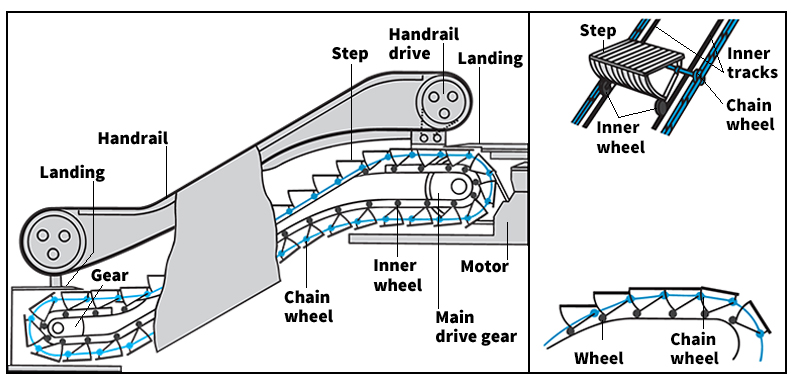Conveyor belt is a device that conveys (carries) large quantities of material from place to place. It consists of an endless belt that is looped over two pulleys. One of the pulleys is called the drive pulley, and supplies the power that keeps the belt moving. Most conveyor belts are powered by an electric motor.

The belt travels over a series of rollers that reduce friction and support the belt. The material moves along the belt at a moderate speed in a straight line. A conveyor belt can carry material at a much steeper grade, or slant, than can a truck or a railroad train. The steepness of the grade is limited only by the slant at which the material will slide down the belt. Conveyor belts such as those used in mines and quarries may be 1 mile (1.6 kilometers) or more in length.
Types of conveyor belts.
The belt of a conveyor may be flat and wide, and the materials simply placed on the belt to be carried away. But for moving bulk material, such as sugar or salt, the belt forms a trough so the material can be moved without spilling. Other conveyor belts consist of chains that have buckets hanging from the chain. Some chain belts have either hooks or scoops that pick up the material and carry it from one place to another.
Many times, a conveyor belt makes up only a part of a much larger conveyor system. If the conveyor system must change directions or turn a corner, the material is dropped from one belt to another belt that moves in the desired direction. In such a system, each belt is called a flight. Different flights are needed for each change of direction required.
Uses.
Conveyor belts play an important part in mass production. Automobiles, for example, move along the assembly line on a conveyor system (see Assembly line ). Workers stand in one place, and the materials to be worked on move past them.
In airports, conveyor belts carry luggage from the ticket counter to the baggage room. Many buildings now use moving sidewalks, which consist of a ramplike conveyor belt with handrails. An escalator is a conveyor belt designed to form stairs as it moves around as an endless belt. In meat-packing plants, conveyor belts carry the carcasses of the animals from one station to another to be processed.
Conveyor belts are widely used to load and unload ships, trucks, and railroad cars. One such system moves thousands of tons of coal an hour in a steady stream from railroad cars to the belt. The belt carries the coal to a loading tower that distributes the coal to the various parts of a ship. Mines transport their ores to ships or factories in much the same way.
Many industries use special types of conveyor belts to make their products. Large bakeries, for example, use conveyor belts to speed up the baking of bread. The mixed dough is placed in pans and put on an endless belt that passes through a walled oven over 100 feet (30 meters) long. It may take about 30 minutes to carry the pans through the oven. The continuous movement of a number of these belts allows large bakeries to bake tens of thousands of loaves of bread an hour.
